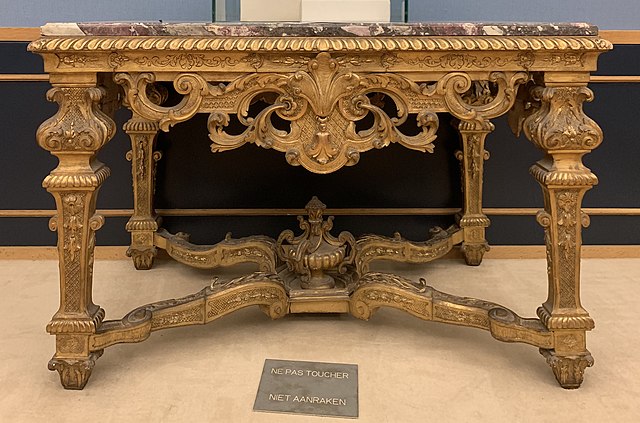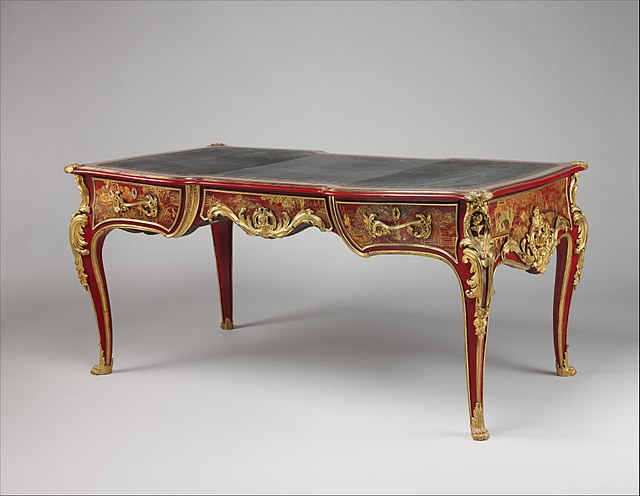A billiard table or billiards table is a bounded table on which cue sports are played. In the modern era, all billiards tables provide a flat surface usually made of quarried slate, that is covered with cloth, and surrounded by vulcanized rubber cushions, with the whole thing elevated above the floor. More specific terms are used for specific sports, such as snooker table and pool table, and different-sized billiard balls are used on these table types. An obsolete term is billiard board, used in the 16th and 17th centuries.
Larger tables may require multiple lamps to properly light the playing surface.
Billiard Table Manufactory, J. M. Brunswick & Bro., Proprietors, Cincinnati, Ohio, 1865 ad
A cue ball and the 1 ball close to a WPA-style pocket. (The balls are the same size; the cue ball looks large due to foreshortening.)
A WEPF-style pool table, showing a cue ball and red and yellow balls close to the small, rounded, nearly parallel-sided pocket
A table is an item of furniture with a raised flat top and is supported most commonly by 1 to 4 legs. It is used as a surface for working at, eating from or on which to place things. Some common types of tables are the dining room tables, which are used for seated persons to eat meals; the coffee table, which is a low table used in living rooms to display items or serve refreshments; and the bedside table, which is commonly used to place an alarm clock and a lamp. There are also a range of specialized types of tables, such as drafting tables, used for doing architectural drawings, and sewing tables.
A gilded Baroque table, with a stone top (most probably marble), from the Cinquantenaire Museum (Brussels, Belgium)
Rococo writing table; 1759; lacquered oak, gilt-bronze mounts and lined with modern leather; height: 80.6 cm, width: 175.9 cm; Metropolitan Museum of Art (New York City)
Roman dining table: mensa lunata
Large 17th-century English folding tables








